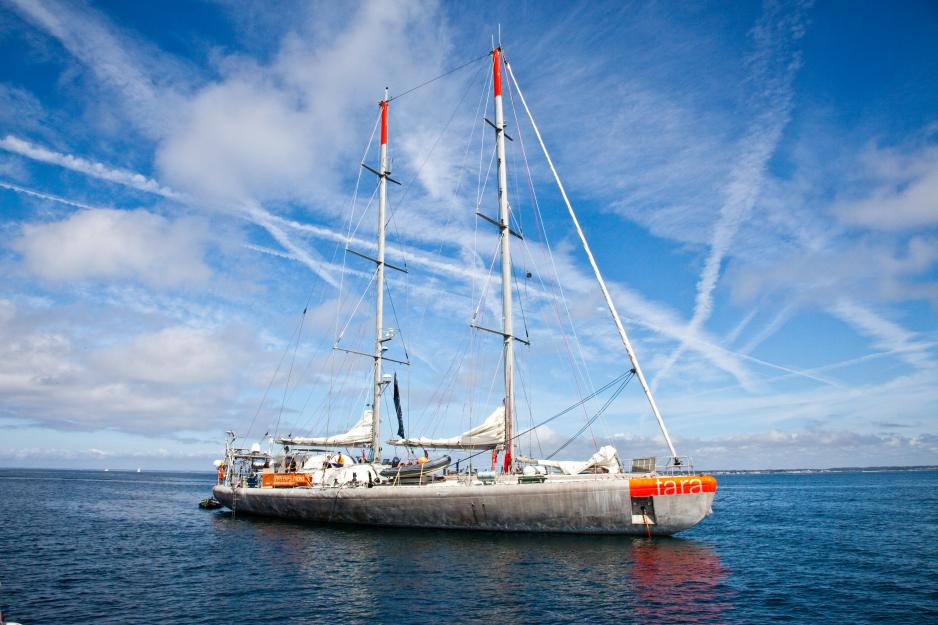Arctic Ocean Biodiversity Hotspot for Viruses

The schooner, Tara, where scientists lived for over three years while collecting samples from around the world. (Photo credit: Yohann Cordelle)
Three-and-a-half-year global study aboard single schooner finds surprising viral diversity in Arctic Ocean.
In addition to finding that the oceans are home to almost 200,000 different virus species, a recent study made the surprising discovery that the Arctic Ocean is a hotpot for viral diversity.
Publishing their findings in the journal Cell, researchers noted that the most significant levels of biodiversity were found in shallow and tropical areas but that the diversity in Arctic waters came a close second.
They point out that their findings did not map with the latitudinal diversity gradient—the idea that biodiversity is greatest closest to the equator and decreases towards the poles.
Understanding the world’s upper oceans
This study was the result of a multiyear endeavour aboard a 36-meter long schooner in which researchers collected 145 water samples from sites around the world in order to gain a greater understanding of the world’s upper oceans.
Part of the larger Tara Oceans and Malaspina research expeditions, scientists collected information on a wide swath of marine matter beyond viruses and have published results elsewhere, including an earlier article in the journal Science.
Five global viral communities
By filtering the samples they collected and analyzing the viral DNA, scientists were able to identify 195,728 virus populations or species. These species were spread across five global regions (including two distinct Arctic regions) each home to distinct viral communities.
A majority of the viruses found are bacteriophages, or viruses that attack bacteria, and are generally harmless to people.
They are far from harmless for bacteria, however, as it is believed that viruses are responsible for killing approximately 20 percent of bacteria in the ocean every day.
This, in turn, prevents carbon from being moved up the food chain by releasing it back into the oceans for other organisms to consume. Some of this carbon is ultimately captured in a way that it remains confined to the ocean.
Implications for climate change
Due to their role in disrupting the release of carbon, it is hypothesised that viruses may serve a significant role in mitigating the impacts of climate change.
The ocean is already responsible for absorbing half of the carbon dioxide produced by humans and it is posited that, using the information gleaned from this study, scientists could help boost the ability of viruses to move carbon dioxide from shallow waters into the deep ocean.
Calls for more work
Though this study is credited with providing a massive amount of new data on ocean viruses, some have noted out that there is still much to be done. Notably there are largely under-sampled areas of the world such as the eastern Pacific and western Indian oceans.
With regards to the Arctic Ocean, it has been further pointed out that the study sampled Arctic waters repeatedly in a small area over the course of half a year whereas, in other locals, collections were done on single trip.
Further sampling at these other locations might reveal greater levels of biodiversity there and thus might prove that the Arctic Ocean is, relatively speaking, not as diverse.
Other Arctic viruses
This is not the first-time viruses have made headlines in the Arctic. Over the last few years, fears have been raised about potential “zombie” viruses or pathogens that might emerge from thawing permafrost.
While the threat posed to humans was overblown, the viruses found proved to be scientifically valuable. Unlike more recent viruses which are fairly simple, the ancient viruses uncovered in Arctic ice are significantly larger and more complex than their descendants.
Some of the viruses uncovered were up to 30 times larger than the average virus today and rivalled the size of a bacterium.
Although viruses are not considered to be living, some of these ancient viruses contained some of the qualities associated with life such as a functioning metabolism.
